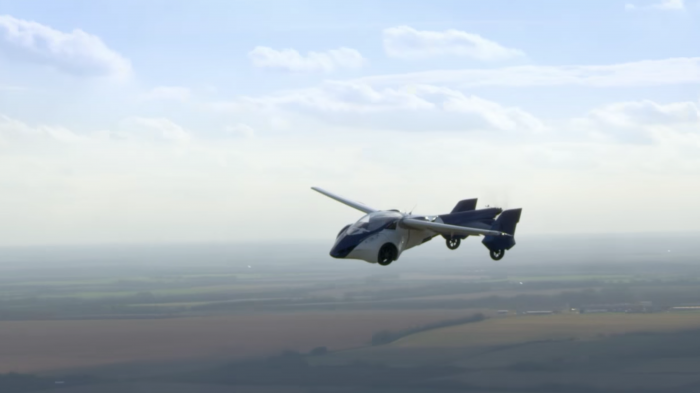Who’s Brave Enough to Be a Test Pilot for Flying Cars?

Before anything goes on offer to the public, it needs to be thoroughly tested. Trouble is, when you’re building a flying car, you might struggle to find people brave enough.
While the idea of airborne automobiles has hovered around for decades, there’s currently a very distinct buzz about the prospect. Last year, for instance, Uber seemed to lay out serious plans to build out an on-demand urban aviation system within the next five to 10 years.
That sounds ambitious, but Uber is not alone in liking the idea of personal aerial transit. This week, Dubai’s Roads and Transportation Agency announced that it plans to roll out single-passenger autonomous drones to ferry people around the city as soon as this July. It’s not a flying car, sure—but it’s nudging in that direction.
There are a number of companies trying hard to build the real thing. Take your pick from Joby Aviation, eHang, Zee.Aero, and Kitty Hawk, among others. The final two on that list boast Google’s Larry Page as an investor. Even larger aerospace companies like Airbus claim to be committed to building the things.
While companies such as AeroMobil and Terrafugia have demonstrated that they can build airplanes that can drive, a flying car is a rather more subtle and, well, car-like thing. And there are clearly numerous obstacles to building such a vehicle—not least creating a compact airframe fit for the road that can also accommodate the means of creating respectable lift and power in the air.
And yet, however preposterous they may seem, these vehicles are—very slowly—edging closer to reality. That much is made clear by a series of new job ads: both Kitty Hawk and Zee.Aero are currently looking to recruit flight test engineers.
In the case of Kitty Hawk, a private pilot’s license is listed as desirable for the role. It also explains that the company likes to “design/build/test/fly in rapid iteration,” so the ideal candidate will “be energetic, adaptable and a fast learner who can make sound judgments in safety-critical situations.” Which sounds ominous at best.
Speaking to the BBC about Dubai’s drones, Steve Wright, an avionics researcher at the University of the West of England, explained that “the tricky bit is making systems that are resilient to failure, adding that he "would like to see the drone flying for at least 1,000 hours before I saw a human in it."
Still, you know what they say: to make a flying car, first you must break some in testing.
(Read more: BBC, Reuters, “Uber’s New Goal: Flying Cars in Less Than a Decade,” “Flying Cars Now Seem a Bit Less Ridiculous, but Not Much”)
Keep Reading
Most Popular
Large language models can do jaw-dropping things. But nobody knows exactly why.
And that's a problem. Figuring it out is one of the biggest scientific puzzles of our time and a crucial step towards controlling more powerful future models.
How scientists traced a mysterious covid case back to six toilets
When wastewater surveillance turns into a hunt for a single infected individual, the ethics get tricky.
The problem with plug-in hybrids? Their drivers.
Plug-in hybrids are often sold as a transition to EVs, but new data from Europe shows we’re still underestimating the emissions they produce.
Stay connected
Get the latest updates from
MIT Technology Review
Discover special offers, top stories, upcoming events, and more.